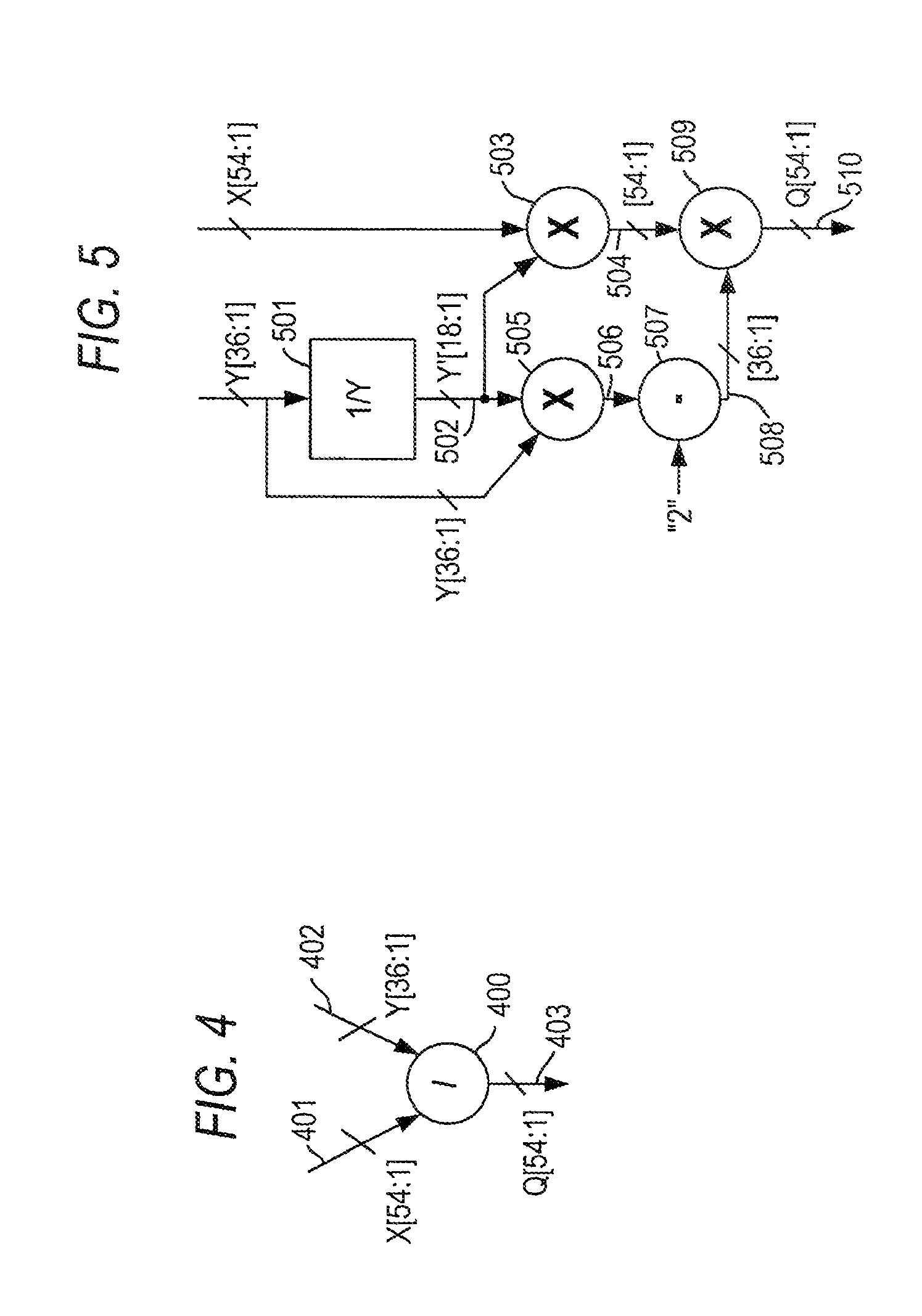Implementing mixed-precision floating-point operations in a programmable integrated circuit device
a technology of integrated circuit devices and floating point operations, applied in computing, computation using denominational number representations, instruments, etc., can solve problems such as increasing the complexity of applications for which plds are used, and achieve the effect of reducing the resources needed, not consuming significant resources
- Summary
- Abstract
- Description
- Claims
- Application Information
AI Technical Summary
Benefits of technology
Problems solved by technology
Method used
Image
Examples
Embodiment Construction
[0023]In accordance with the present invention, when a double-precision floating point number is to be multiplied by a single-precision floating point number, instead of “promoting” the single-precision number to double precision, and then multiplying two double-precision numbers, which would require a 54-bit-by-54-bit multiplication, each number remains in its native precision. This results in performance of an asymmetric multiplication, such as a 54-bit-by-36-bit multiplication. In the STRATIX® programmable logic device products identified above, this results in the resource savings described above for the mantissa portion of the operation.
[0024]The exponent portion of the operation is handled similarly to the aforementioned “promotion” technique, insofar as promotion of the exponents does not consume excessive resources in the way that promotion of the mantissa does. In a programmable device such as a programmable logic device, these exponent operations may be carried out in spec...
PUM
 Login to View More
Login to View More Abstract
Description
Claims
Application Information
 Login to View More
Login to View More - R&D
- Intellectual Property
- Life Sciences
- Materials
- Tech Scout
- Unparalleled Data Quality
- Higher Quality Content
- 60% Fewer Hallucinations
Browse by: Latest US Patents, China's latest patents, Technical Efficacy Thesaurus, Application Domain, Technology Topic, Popular Technical Reports.
© 2025 PatSnap. All rights reserved.Legal|Privacy policy|Modern Slavery Act Transparency Statement|Sitemap|About US| Contact US: help@patsnap.com



